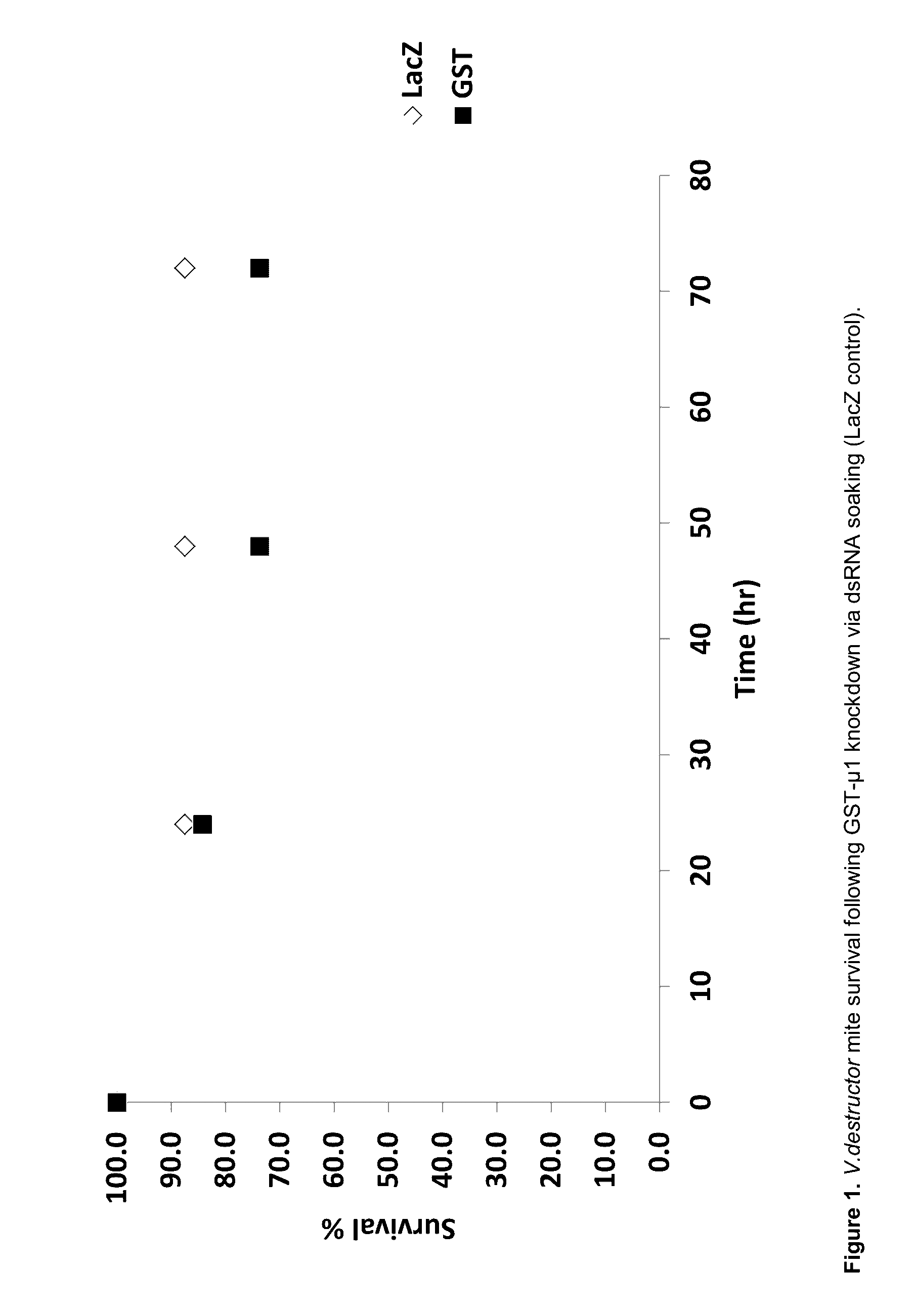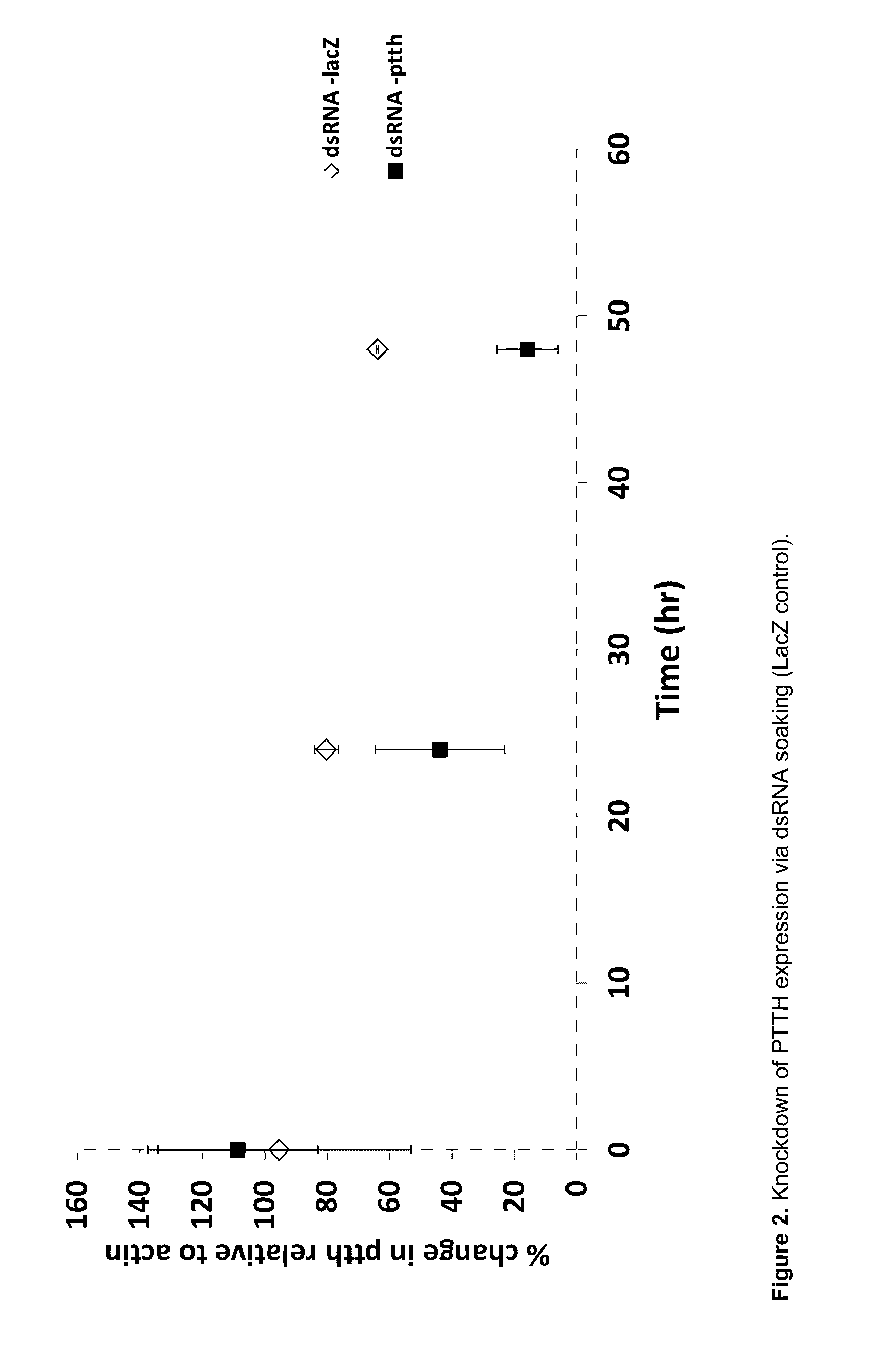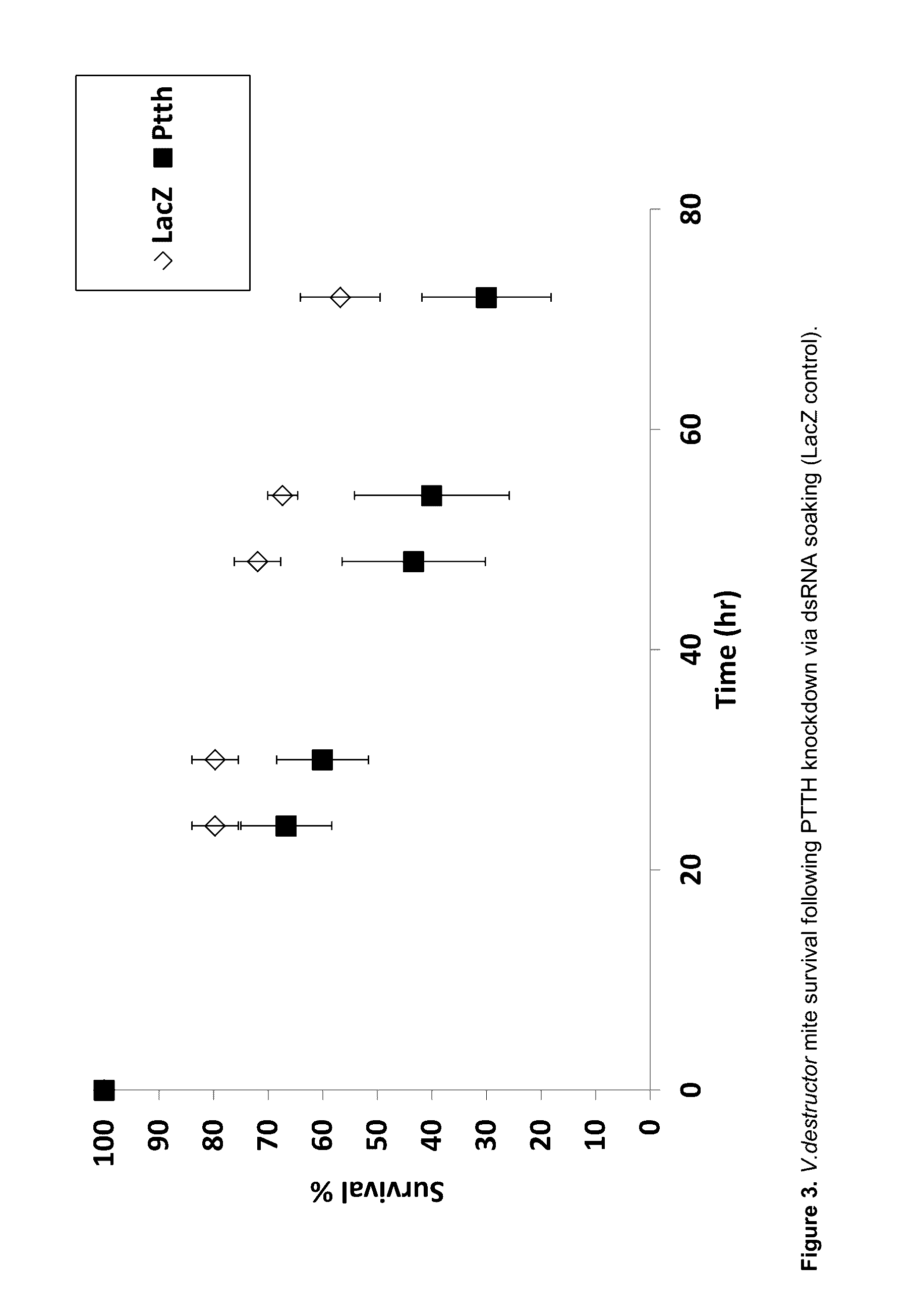Control of varroa mite infestation
a technology of varroa mites and varroa spores, applied in the direction of antiparasitic agents, drug compositions, transferases, etc., can solve the problems of increasing the mortality of v. destructors up to 70%, and achieve the effect of reducing expression, increasing the mortality of v, and reducing the expression of identified genes
- Summary
- Abstract
- Description
- Claims
- Application Information
AI Technical Summary
Benefits of technology
Problems solved by technology
Method used
Image
Examples
example 1
Suppression of GST-Mu1 Expression
[0183]Gene knockdown of GST-Mu1 was tested on mites sampled from local beekeepers over a 72 h period. Briefly, for each experiment two groups of eight mites were soaked in 2× saline solution containing 10 ul of 1.25 ug / ul Vd-GSTMu1 dsRNA for 12 h at 4′C, removed and placed on larvae in petri dishes. Varroa were kept incubators at 30′C and 80% RH. Mortality was monitored and samples removed into RNAlater at 24 h intervals.
[0184]Analysis of detection PCR gel products using imageJ showed that significant knockdown was achieved after 48 h post-treatment (data not shown). As per initial studies in 2009 with GSTMu1 there was no significant mortality associated with knockdown after soaking compared with mites soaked in control LacZ dsRNA (FIG. 1).
example 2
Suppression of Neural Target Expression—CHH and PITH
[0185]Both crustacean hyperglaecemic hormone (CHH) and prothoracicotropic hormone (PITH) are involved in ionic and energetic metabolism, molting and reproduction.
[0186]Homologues were found by BLASTing the Varroa genome with known tick and spider mite sequences, as well as from short reads in a synganglion EST library created in 2009. Primer sets were designed for both generation of dsRNA as well as detection of knockdown. BLAST of dsRNA sites vs the Apis mellifera genome did not produce highly conserved domains.
[0187]Knockdown for both PTTH and CHH was performed by the soaking method detailed above. In groups treated with dsRNA-PTTH, an 85% knockdown of target gene was achieved after 48 h (FIG. 2) compared with levels of the housekeeping gene actin. Interestingly PTTH transcript numbers also showed a decrease in the control LacZ group. This may be due to a natural decline in PTTH after harvest of mites. Levels of PTTH were signifi...
example 3
Suppression of Other Targets
[0193]Further genes were considered that are either known targets of pesticides or common genes known to be of critical importance to basic physiology.
[0194]An initial list of targets was selected and candidates searched for in the available Varroa databases. Some targets were discarded at this stage due to a lack of hits in the databases.
[0195]Of the list, seven additional targets remained which had sequences in Varroa databases that show homology to other arachnid species and with sufficiently long reads for dsRNA delivery (>500 bp). The targets investigated were acetylcholinesterase (AChE), monoamine oxidase (MOA), v-ATPase subunit C (vATPc), chitin synthase (CHS), pyruvate kinase (PyK), GABA receptor (GABA) and α-tubulin (α-TUB).
i) Acetylcholinesterase (AChE)
[0196]AChE is the target site for both organophosphate and carbamate insecticides. Both classes of pesticide irreversibly inhibit AChE, fatally disrupting nerve function.
[0197]Knockdown was measur...
PUM
| Property | Measurement | Unit |
|---|---|---|
| Fraction | aaaaa | aaaaa |
| Time | aaaaa | aaaaa |
| Time | aaaaa | aaaaa |
Abstract
Description
Claims
Application Information
 Login to View More
Login to View More - R&D
- Intellectual Property
- Life Sciences
- Materials
- Tech Scout
- Unparalleled Data Quality
- Higher Quality Content
- 60% Fewer Hallucinations
Browse by: Latest US Patents, China's latest patents, Technical Efficacy Thesaurus, Application Domain, Technology Topic, Popular Technical Reports.
© 2025 PatSnap. All rights reserved.Legal|Privacy policy|Modern Slavery Act Transparency Statement|Sitemap|About US| Contact US: help@patsnap.com



